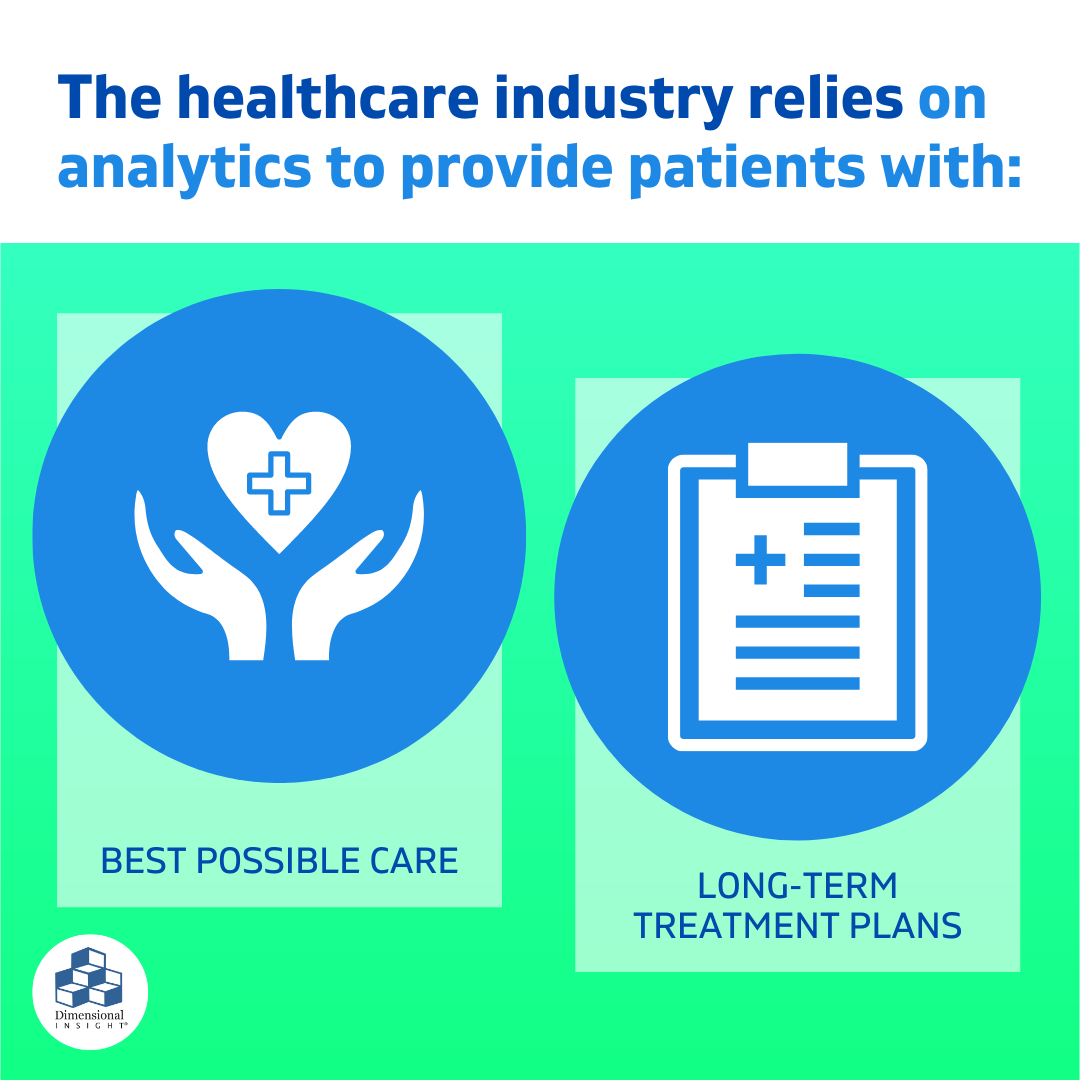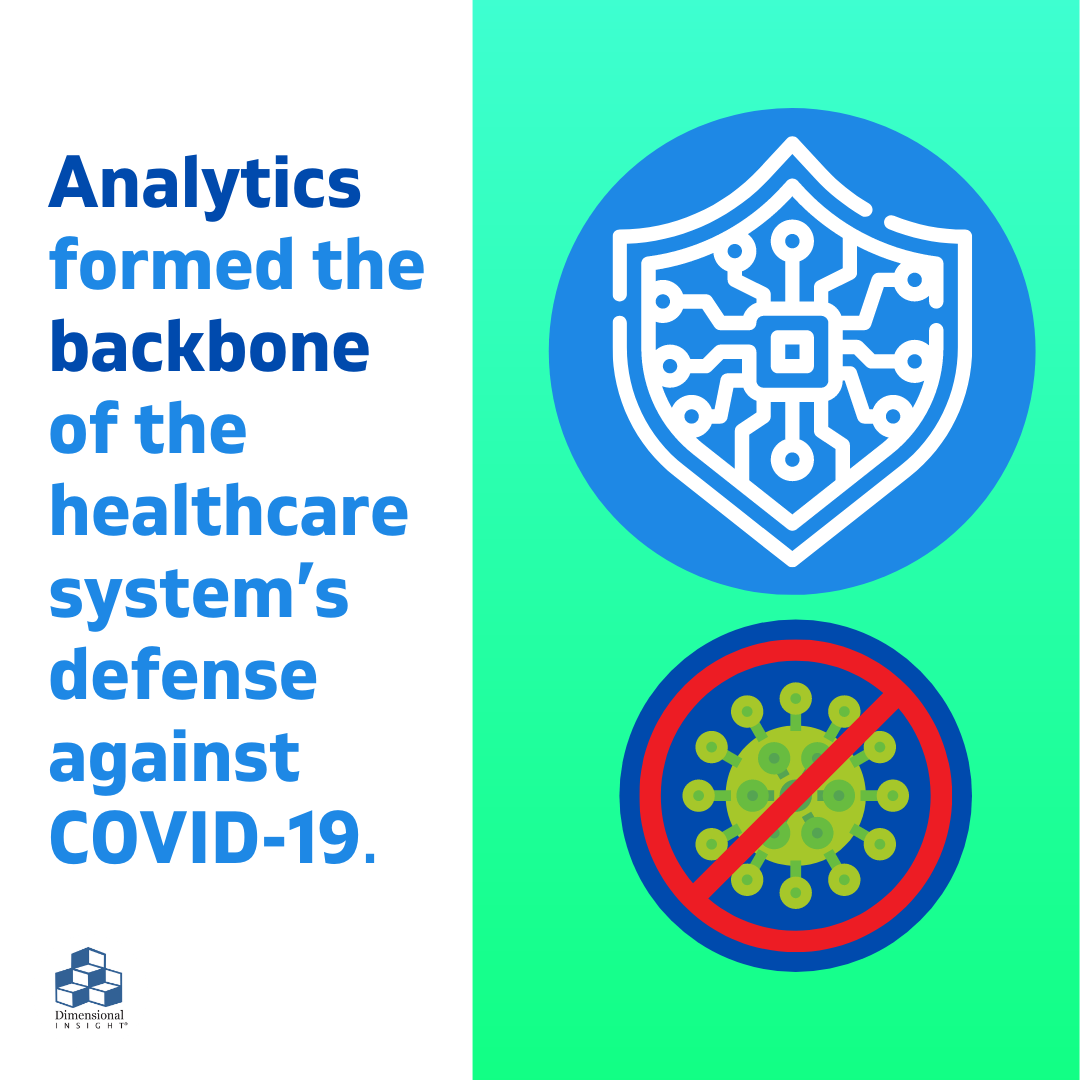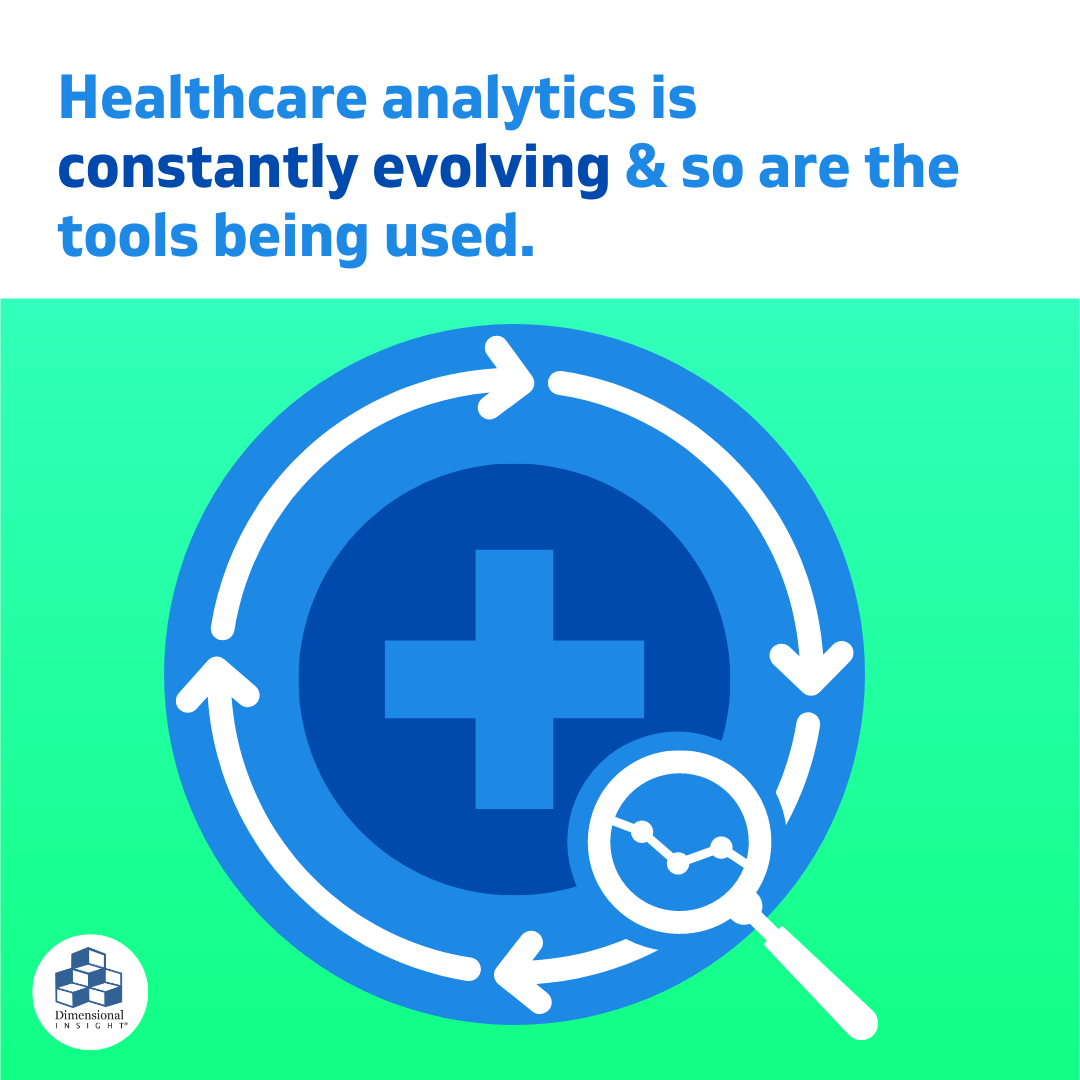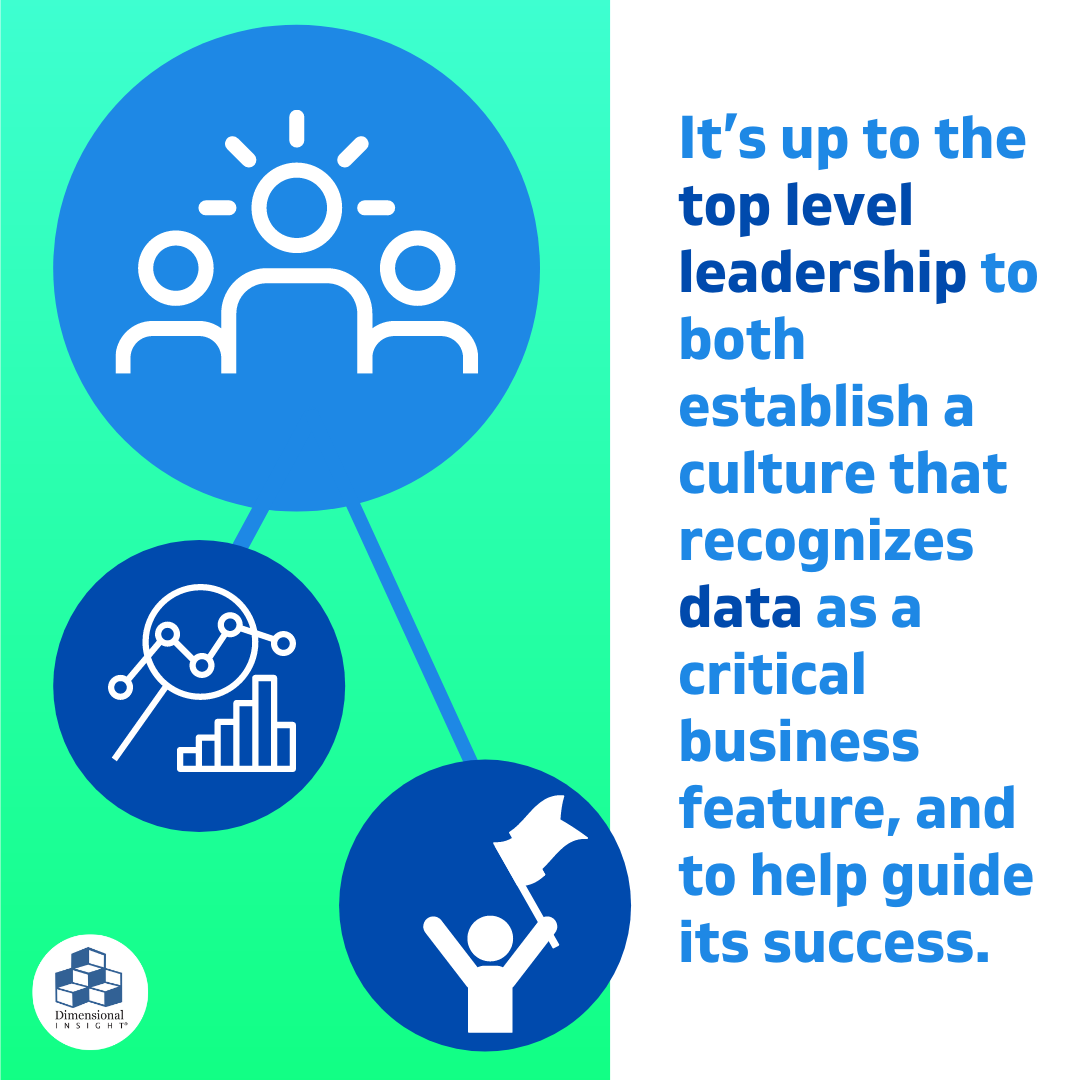The C-suite, or executive managers, of an organization (CEO, CFO, COO, etc.) are responsible for the company’s overall direction and making sure day-to-day operations align with overarching strategic goals. With the company’s success resting on their shoulders, executives need timely and accurate information that enables them to make critical business decisions. In the modern age where data permeates all areas of society, it’s of particular importance that a company’s top leadership embraces and advocates for advanced business intelligence tools.
In a recent webinar sponsored by Dimensional Insight, healthcare industry executives discuss the role that data analytics plays in facilitating upper-management decisions and how the C-suite can best implement analytics strategies within their organizations. Here are some of the key takeaways from the panelists.
Data analytics permeates all business operations
The use of data has gone beyond just its role in identifying hidden trends, now forming the backbone of many organizations and allowing management to implement meaningful company-wide changes. It has become a key player in developing and realizing business objectives across all industries, and healthcare is no exception.
In the modern age, every area of an organization’s success can be reduced to how and where they apply data in their decision making. Outside of the traditional applications like managing finances and evaluating staff performance, the healthcare industry relies on analytics to provide patients with best-possible care and enable long-term treatment plans. In an industry where making the right decision can be a matter of life or death, clinical professionals need to have access to timely and accurate information. This can be anything from evaluating possible treatments for a patient based off genomic sequencing, to managing emergency room volumes to increase throughput.
Analytics have also been seeing more use in establishing population health strategies that work to provide proactive measures instead of waiting to respond to complications as they emerge. This entails preemptive treatments, tracking immunizations, managing chronic care, and making clinical predictions for those with genetic predispositions. Additionally, analytics goes beyond the hospital and physician’s office with providers now using data to track post-discharge metrics and schedule necessary follow up appointments.

COVID-19 transformed the role of analytics in healthcare
Responsible for holding the front-line against COVID-19, no industry saw quite as severe a shift in operations and methodology during the pandemic as healthcare. The sudden and extreme changes in patient volumes, supply chain infrastructure, and method of care delivery overwhelmed many systems. Almost overnight, COVID-19 produced a demand for sets of data that many providers and companies hadn’t even considered collecting before. Additionally, success in battling the pandemic required a combined front and competitors were forced to cooperate in developing and implementing effective solutions.
Analytics formed the backbone of the healthcare system’s defense against COVID-19, allowing providers to track data related to positive test results and outbreaks and plan accordingly. Additionally, the sudden surge in patient volume and demand for necessary equipment meant that organizations had to rely on data tools to maximize their resource efficiency.
Following the initial outbreak, various organizations came together to comprise a massive central repository of data to enable research and answer important questions. Recent advances in analytics allowed the enrollment of huge numbers of patients in potential treatment trials at a far faster rate than many organizations were accustomed to. Once the vaccine was finally developed, data become critical to evaluating efficacy, side effects, and supply and demand. By combining data from multiple sources (at both local and federal levels), organizations were able to determine when demand would fall in certain regions. Now, that same data is being used in evaluating strategies for child vaccine approval and booster shots.

Healthcare analytics is constantly evolving
As the world grows and evolves, so do analytics tools and how healthcare organizations use them. Currently, one of the biggest areas in need of renovation is garnering support for data in departments that have traditionally gone without. Financial departments and upper-level management have been well acquainted with data for quite some time—the challenge now is getting people who actually work on the floor to adopt its usage. Frontline managers and other hands-on staff need to develop an appreciation for what the data means, along with user-friendly access to the visualizations tools they need to guide their decisions. Additionally, the burden of data collection needs to be reduced through a greater commitment to human-centered design and task automation in order to curb the risk of burnout.
Not only does the internal culture surrounding analytics need to be reformed, but so does the mentality regarding its applications. In past years, data was often used in retrospective evaluations such as “what went wrong.” However, the recent pandemic reinforced the value in proactive measures and using data in strategic planning. The use of predictive analytics can benefit healthcare operations of any size from pandemic-prevention to streamlining how primary care physicians process their patients. Many upper-level management teams are also hoping for increased interoperability as organizations run into obstacles in transitioning to new platforms and merging with other companies.
And of course, the data tools themselves always have room for improvement. Advancements in AI can assist clinicians in making better decisions for patients by providing recommendations and identifying trends that may otherwise go unnoticed. In the future, many providers are hoping that AI will be able to provide personalized solutions based off individual variables such as genetic predispositions, prior illnesses, and lifestyle habits. Newer and more comprehensive algorithms mean deeper and more thorough data for clinicians to use in their decision-making.

Success with business intelligence starts and ends with upper-level leadership
At the end of the day, an organization’s success with analytics depends on the advocacy and support of their executives. As the head of their company, it’s up to the top-level leadership to both establish a culture that recognizes data as a critical business feature, and to guide its success.
One of the most prolific causes behind organizations failing to make the most of their data is a lack of clear-cut objectives and well-defined pathways for achieving them. Realizing the potential of data analytics requires a manageable plan that incorporates explicit goals and reasonable benchmarks for success. Analytics tools are a waste of resources if they’re not being used to develop actionable and meaningful results that align with the company’s priorities.
By providing operational teams with data useful to their positions, executives are better able to keep the rest of the company engaged with the organization’s central overarching plans. Businesses must adopt the mindset that literacy with analytics is an integral criterion for a position, not a preference. However, this mentality starts at the top. Mid-level managers and front-line workers need to be inspired by their leadership in implementing data outcomes as part of their continuing day-to-day operations.
As the core decision-makers for their organization, it’s critical that executives develop a strong grasp of what different solutions provide and how they will aid the company in realizing its long-term goals. There is no one correct answer for how an organization gets their analytics—finding the correct solution requires knowledge of both the company’s needs and the services that different platforms deliver. Executives must evaluate how they intend to organize their internal and external data management—do they want one comprehensive end-to-end solution like Dimensional Insight’s Diver Platform®, or do they want to customize their approach with an assembly of individual software tools? The answer to this lies in understanding how staff throughout the organization would best utilize analytics in accordance with the company’s broader plans.

Conclusion
With the emergence of new and advanced challenges comes the need for new and advanced solutions. In order to fully realize their company’s potential and pursue new frontiers for growth, C-suite executives must continue to establish best-practices for analytics within their organization. To learn more about recent trends and how healthcare leaders can make the most of their data, watch our full webinar, “Analytics for the C-Suite.”
- How Spirits Brands Can Improve Brand Loyalty with Data Analytics - January 30, 2024
- The Collapse of Herbl, and How Other Cannabis Distributors Can Avoid the Same Fate - January 24, 2024
- Top 5 Blog Posts of 2023 - December 28, 2023




